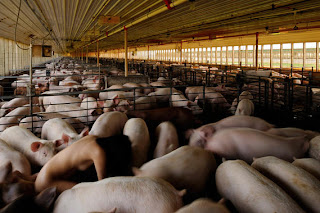This year in an effort to bring what I value into my teaching to share with my students, I decided to try the Food Explorers program with my class. Food Explorers is a program that aims to introduce students to nutritious foods and involve then in discussion, planning, preparing, and eating of them. My school is already apart of the BC School Fruit and Vegetable Nutritional Program and my students are routinely introduced to new and healthy foods. But they are often very reluctant to try them, or have already decided they won’t like it before taking a bite. I like the premise behind the Food Explorer program as it lets students take more ownership of the healthy foods they eat. After learning about, making connections with, and sharing their experiences with the chosen food, they choose as a class from the recipes provided a way to try the new food. I hoped that the act of choosing, preparing, and cooking a new food would create a far greater incentive for a child to try something unfamiliar and outside their comfort zone.
After our pumpkin patch trip I thought it might be a great opportunity to introduce squash. I stumbled across a book in my school library called Pumpkin Soup by Helen Cooper. It is about a cat, duck, and squirrel who love to eat pumpkin soup. One day they weren’t able to find a ripe pumpkin. They decided to try other new soups but every new adventure ended with the duck saying “Yuck!” and refusing to try something new. While reading this story to my class they loved yelling yuck along with the duck. It also opened up a great conversation with my students about trying foods before deciding we don’t like them. One of my students said, “that duck has a bad attitude” and all the other children agreed. After each yuck, they repeated “that’s a bad attitude” and scolded the naughty duck. I stopped the story and asked how the duck could have a good attitude towards the soup his friends made. One of them suggested, “he should try a little bit first”.
This was a great teachable moment because whenever my class is trying a new fruit or vegetable I always tell them “even if we don’t think we like it, we try a little bite. It’s ok not to like it, but it’s not ok not to try.” This coupled with the positive effects of peer pressure (everyone else around them is trying the new food) all of my students this year are taking at least tiny bites of the food offered, which is a big step. Studies have shown it can take over 20 exposures to a new food for someone to develop a liking for it, so even a small exposure is a big step in the right direction.
At the end of the book the squirrel decides to trick the duck by making a soup that looks like pumpkin soup. He cooks squash, carrots, corn, and tomatoes together and produces a soup that is the exact colour of pumpkin. The duck tries it and exclaims, “That’s not pumpkin! But it’s the best soup I’ve ever tasted!” And my class cheered for the duck and his delicious new soup. I asked my class if they would like to try making the delicious soup that squirrel made. I received an unanimous “yes!” and I told them that tomorrow we would make the soup in class. We talked about the fact that some of them might not think they like pumpkin soup, and that’s ok, but do we want to be like the duck who says yuck? Everyone agreed we did not want to be like the duck who said yuck and that we would all try at least one little bite.
The next day I came to school armed with my slow cooker, emersion blender, and the ingredients for making “pumpkin soup”. I chopped and my students helped me to put the ingredients into the slow cooker and stir the soup. I turned the slow cooker on high and hoped that it would be ready by the end of the day. It was not (a teachable moment for the teacher about testing things out before the lesson). So we let it cook over night and by the next day our classroom smelled of delicious soup. All day my students spoke of how excited they were to try the soup. When it finally came time I served each child a bowl and asked them “are we going to be the duck that said yuck?” They all said "no" and every single child tried a bite of the soup. Not everyone liked it, but they all tried it and took pride in their efforts and bravery. Their efforts of choosing, preparing, and talking about the soup made trying the new food an enjoyable experience, even if the end result was them deciding “it wasn’t their favorite” (which is what we say in the classroom instead of “I don’t like it”).
I really like the Food Explorer Program and the concepts it embodies. Involving my students in food choice and preparation is changing they way they interact with food and their willingness to try new foods. Food can empower, engage, and surprise. It has become a great learning tool in my classroom. Next on the menu, beans. We can’t wait!
Links:
Food Explorer Program
BC Fruit and Vegetable Nutritional Program
Pumpkin Soup, by Helen Cooper




